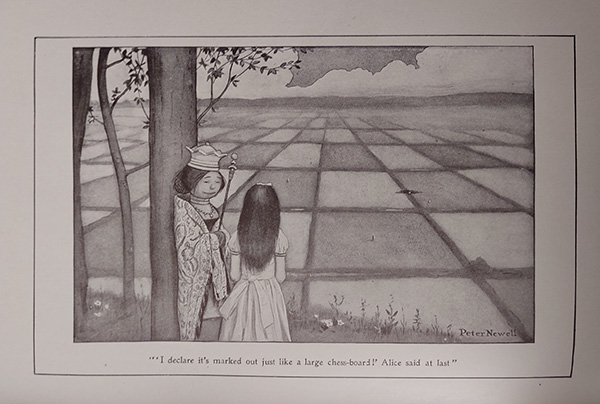Chess, the ancient game of strategy and skill, has captured the imaginations of players for centuries. Its intricate dance of pieces on an 8×8 board has inspired countless works of literature, art, and philosophy. One particularly enchanting exploration of the game comes through Lewis Carroll’s classic novel, “Through the Looking-Glass, and What Alice Found There.” In this article, we delve into the symbolic and thematic connections between chess and Carroll’s whimsical world beyond the looking glass.
Chess as a Metaphor
Chess is more than a mere game; it is a metaphor for life, a battlefield where intellect and foresight clash. The chessboard represents a microcosm of the world, where each piece has its unique role and strategic importance. Carroll’s choice to use chess as a central theme in “Through the Looking-Glass” adds depth to the narrative, allowing readers to explore the parallels between the game and the challenges faced by Alice in her fantastical journey.
The Chessboard Landscape
Carroll’s vivid description of the landscape beyond the looking glass mirrors the black-and-white squares of a chessboard. The imagery of the Red and White Queens, the Red and White Knights, and other characters inhabiting the squares reinforces the chess motif. As Alice navigates through this surreal landscape, readers can’t help but draw connections between the characters and the pieces on a chessboard, each with its own rules of movement and unique contribution to the unfolding narrative.
Symbolism of the Chess Pieces
In “Through the Looking-Glass,” the characters themselves become chess pieces, imbued with the characteristics and movements of their corresponding chess counterparts. The Red Queen moves swiftly, the White Knight is bumbling yet endearing, and the Tweedledee and Tweedledum duo resemble pawns standing steadfastly side by side. Carroll masterfully weaves the traits of each chess piece into the personalities of his characters, creating a whimsical yet thought-provoking commentary on the nature of the game and life itself.
Strategic Thinking and Problem-Solving
Chess is a game that requires strategic thinking, careful planning, and adaptability. Similarly, Alice’s journey in “Through the Looking-Glass” demands her to think several steps ahead, to navigate the challenges presented by the peculiar inhabitants of the looking-glass world. Carroll cleverly incorporates chess moves and strategies into the narrative, challenging readers to unravel the symbolic significance behind each encounter.
The Journey as a Game
As Alice progresses through the looking-glass world, her experiences mirror the twists and turns of a chess game. The novel unfolds like a grand strategy, with each chapter representing a move on the board. Carroll’s use of chess as a narrative structure adds a layer of complexity to the story, inviting readers to consider the broader implications of the choices we make in our own life “games.”
“Through the Looking-Glass” stands as a testament to Lewis Carroll’s ability to infuse profound symbolism into a seemingly whimsical narrative. By intertwining the world of chess with the fantastical realm beyond the looking glass, Carroll invites readers to contemplate the parallels between the strategic intricacies of the game and the challenges of life’s journey. Chess becomes more than a mere pastime; it becomes a lens through which we can explore the timeless themes of strategy, imagination, and self-discovery. As we traverse our own looking glass, perhaps we can glean insights from the timeless game and its intricate dance of pieces on the board of life.
